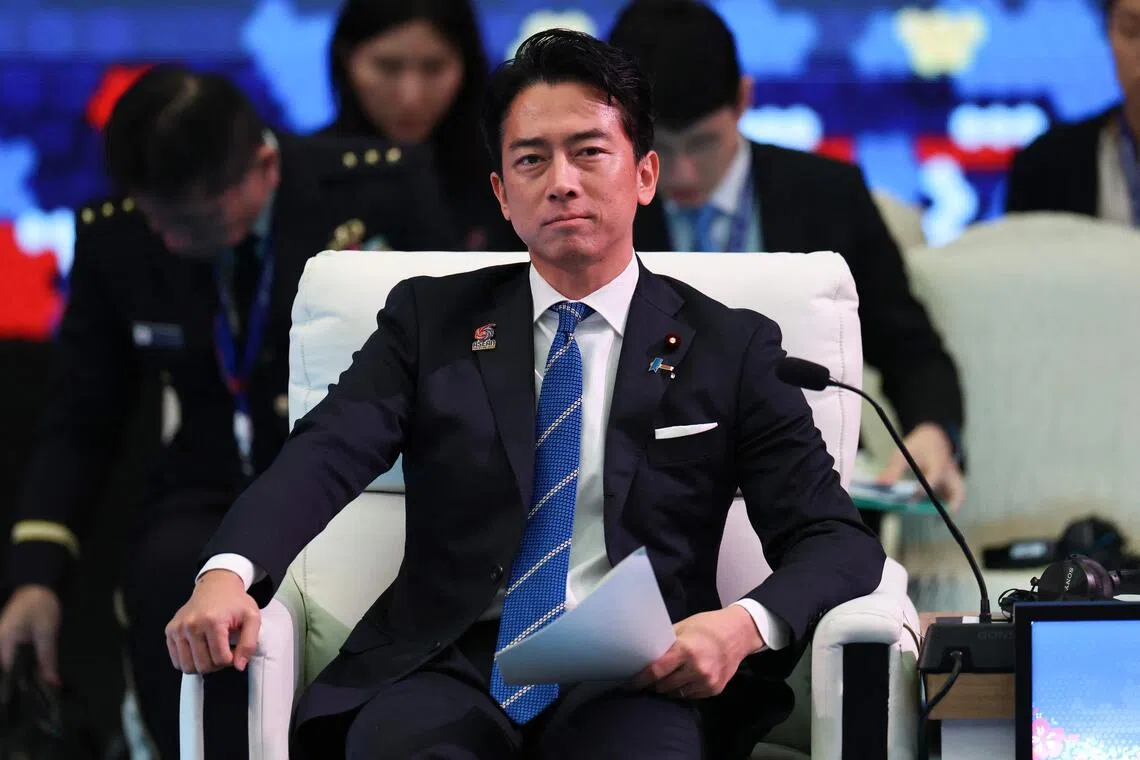Japan Boosts Deterrence: Missiles Deployed on Yonaguni Island Near Taiwan Amid China Tensions
 Japan
Geopolitics
Japan
Geopolitics

Japan's Defence Minister confirms missile deployment on Yonaguni, near Taiwan, to boost deterrence against China's growing military influence and regional tensi
Japan Strengthens Defenses: Missiles Deployed on Yonaguni Island Near Taiwan
Japan is proceeding with plans to bolster its military presence on Yonaguni, an island strategically located just 110 kilometers east of Taiwan. This deployment of medium-range surface-to-air missiles is a direct response to escalating regional tensions, primarily driven by China's growing military influence and its stance on Taiwan.
Defence Minister Affirms Deterrence Strategy
Japanese Defence Minister Shinjiro Koizumi confirmed the missile deployment during his visit to Yonaguni on November 23. He emphasized that enhancing Japan's deterrence capabilities and deepening its alliance with the US military are critical for national security.
"The deployment can help lower the chance of an armed attack on our country," Koizumi stated, dismissing concerns that such actions would heighten regional instability. He believes these measures are essential to protect the "peaceful livelihoods of the Japanese people."
Strategic Build-up Across Southern Islands
This initiative is part of a broader military expansion across Japan's southern island chain. Other islands like Ishigaki and Miyako are also being fortified. Ishigaki is equipped with anti-ship missiles, while Miyako serves as a crucial hub for air surveillance and military facilities, including ammunition storage. These strategic placements reflect Tokyo's profound concerns regarding China's expanding military might and the potential for conflict over Taiwan.
Escalating Tensions and Diplomatic Spats
Recent diplomatic friction has further intensified regional anxieties. Comments by Prime Minister Sanae Takaichi on November 7, where she pondered Japan's potential military involvement with other nations if China attacked Taiwan, triggered an angry response and economic retaliation from Beijing. While Ms. Takaichi later reiterated Japan's standard policy of not discussing hypothetical scenarios, China continues to demand a retraction, rejecting claims that Japan's stance on a Taiwan crisis remains unchanged.
Yonaguni's Dual Role: Tourism and Defense
Yonaguni, while a popular destination for tourists and scuba divers, holds immense strategic value. The island hosts a critical surveillance radar facility that monitors nearby seas and airspace, and since 2024, an advanced electronic warfare unit capable of jamming enemy communications and guidance systems. Its geographical proximity to potential flashpoints was starkly illustrated in 2022 when Chinese ballistic missiles landed perilously close, just south of Yonaguni, during drills following then-US House Speaker Nancy Pelosi's visit to Taiwan.
International Cooperation and Geopolitical Landscape
Minister Koizumi highlighted that Japan is navigating its "most severe and complex security environment since the end of World War II." In response, the US military recently conducted an exercise simulating the transport of supplies from Okinawa to Yonaguni, preparing for the establishment of a forward-operating base should a regional crisis emerge.
Adding to the complexities, Chinese state-controlled media has published articles questioning Japan's sovereignty over the Ryukyu island chain, to which Yonaguni belongs, referencing historical independence of the Ryukyu Kingdom. While residents of Okinawa prefecture generally do not seek independence, they express apprehension about being drawn into a conflict due to the increasing militarization of their islands.
Japan's determined military build-up on its southern islands, particularly Yonaguni, signifies a calculated effort to strengthen deterrence and safeguard its interests amidst a volatile geopolitical landscape shaped by China's assertive rise and the enduring question of Taiwan's future.